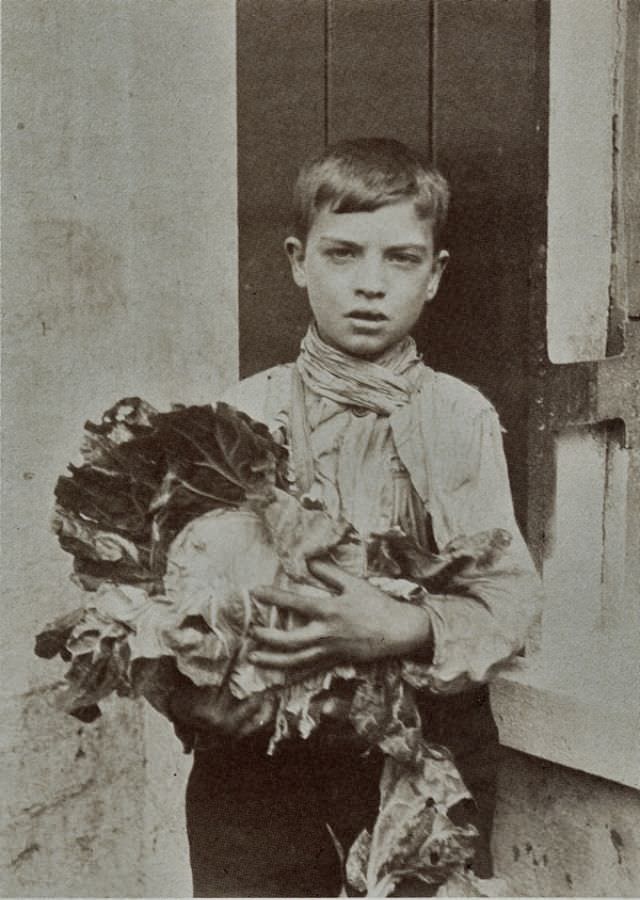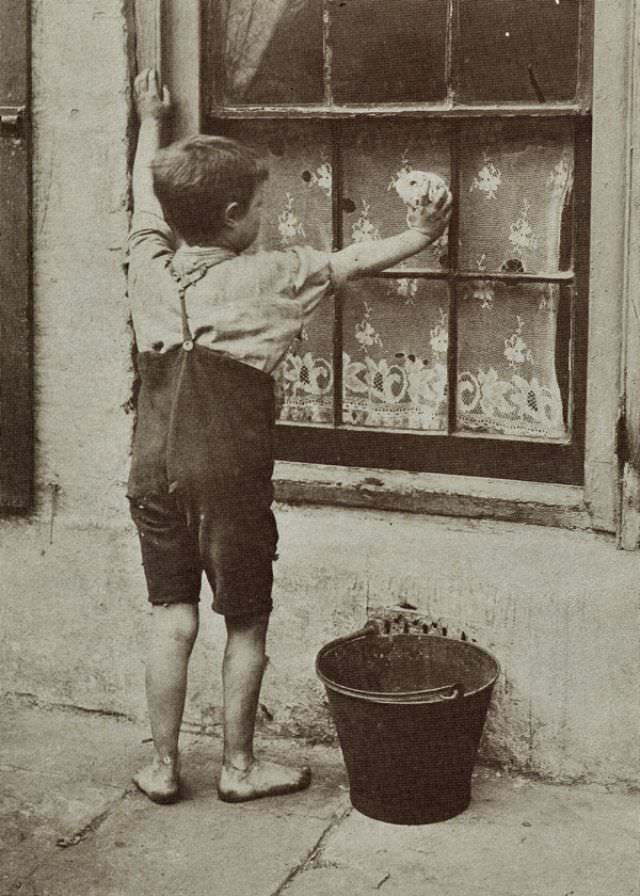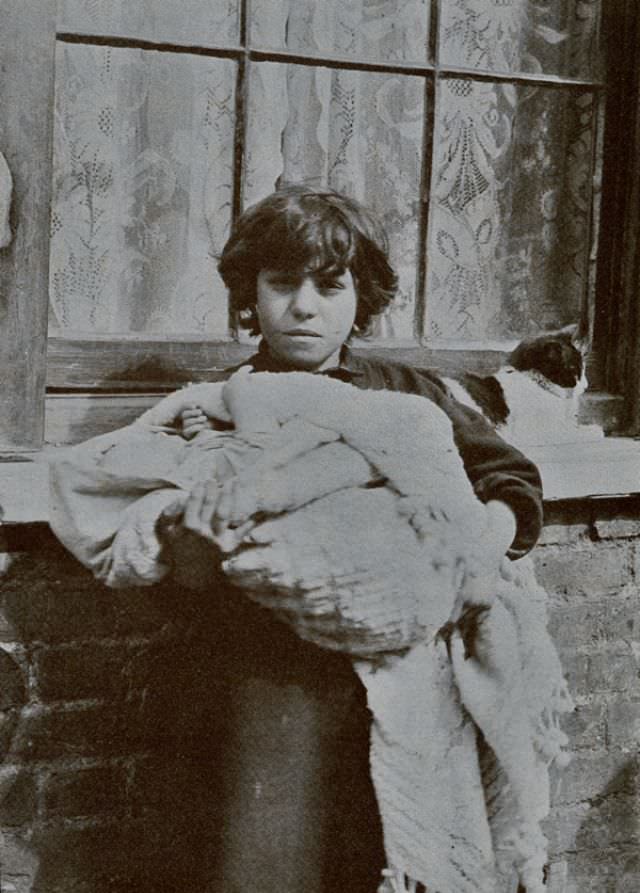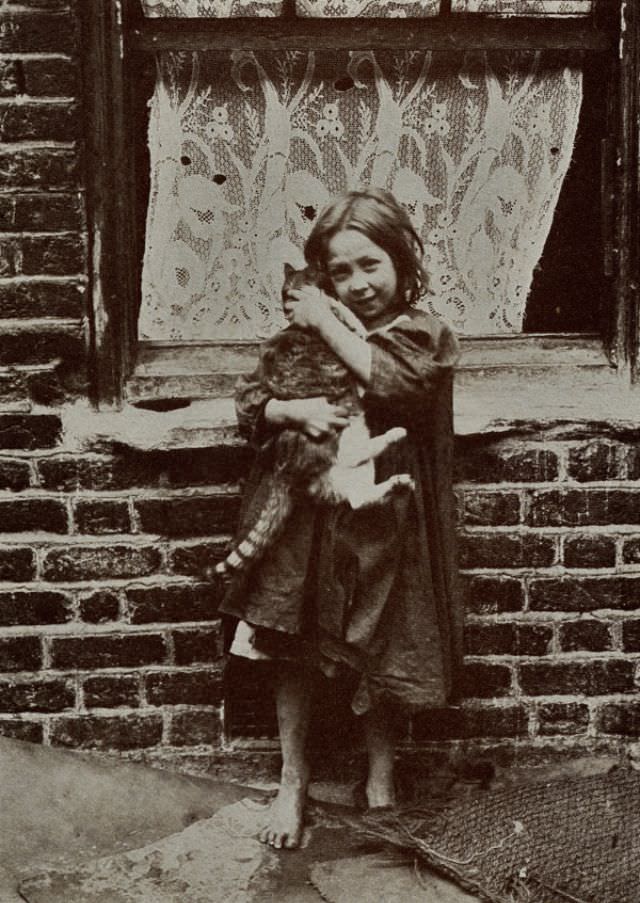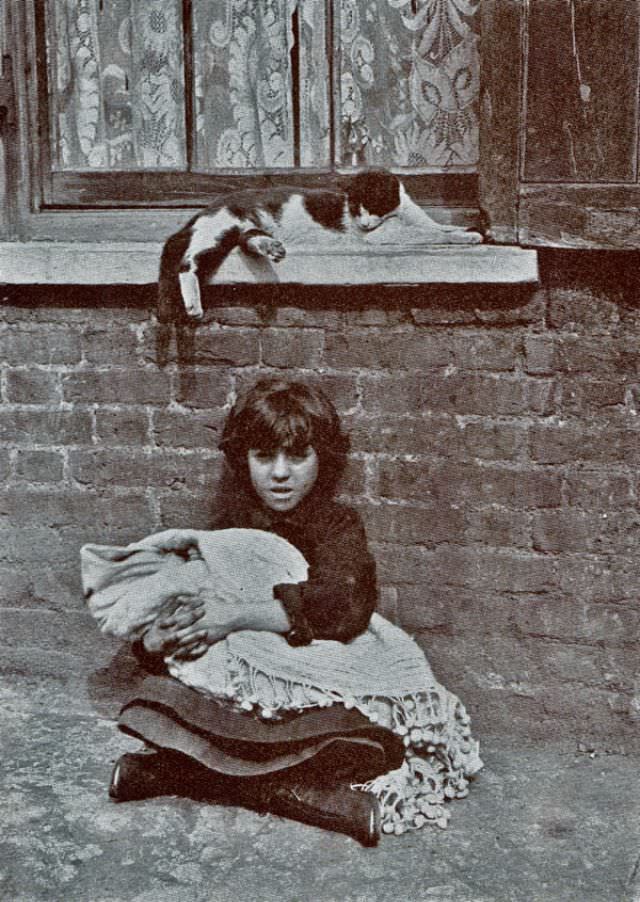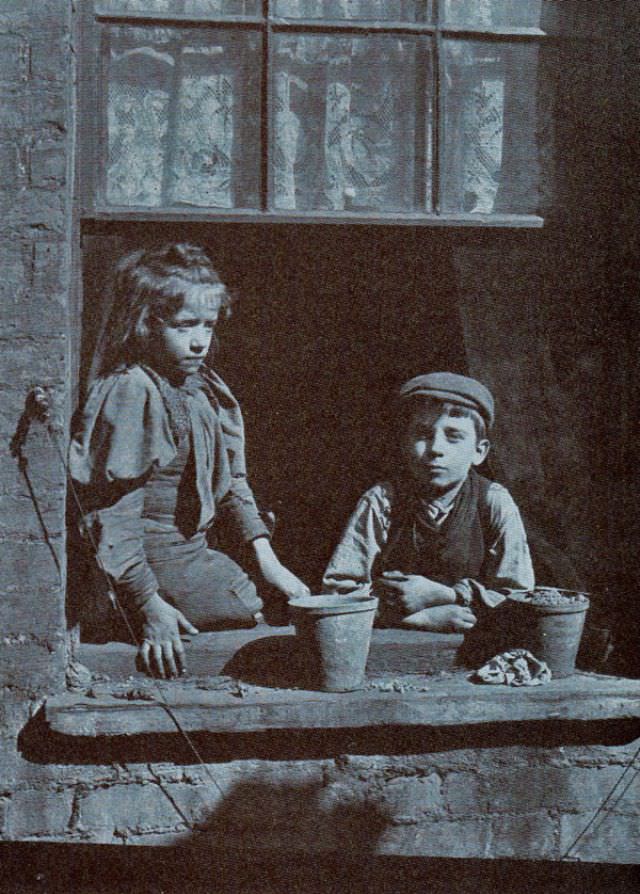London’s East End in the early 1900s was a harsh and unforgiving place, especially for children. Among the bustling markets and crowded tenements, a photographer named Horace Warner captured a stark reality – the lives of destitute children known as the “Spitalfields Nippers.” His photos, though few, offer a haunting glimpse into a world of poverty and hardship.
Poverty’s Portrait
In Warner’s photographs, we see children dressed in rags, their faces etched with worry and hardship. Their eyes, often downcast or staring blankly, reveal the weight of their circumstances. These were children robbed of their childhood, forced to grow up too soon.
Many of these children were orphans or came from families struggling to make ends meet. They lived in cramped, unsanitary conditions, often sharing a single room with multiple family members. Food was scarce, and hunger was a constant companion.
Read more
Labor Over Learning
Education was a luxury these children couldn’t afford. Instead of attending school, they worked long hours in factories, sweatshops, and as street vendors. Boys often toiled as errand runners, newspaper sellers, or chimney sweeps, while girls worked as domestic servants or flower sellers.
The work was often dangerous and exploitative. Children faced hazardous conditions, working with heavy machinery or in cramped, poorly ventilated spaces. They received little pay, and their labor was essential for their families’ survival.
Despite the hardships, there were moments of joy and resilience in the lives of these children. In some of Warner’s photos, we see glimpses of playfulness and camaraderie. Children found ways to entertain themselves, playing games in the streets or finding solace in each other’s company.
Some charitable organizations attempted to alleviate the suffering of these children. They established schools, provided meals, and offered shelter. These efforts, while limited, provided a lifeline for some of the most vulnerable children.





